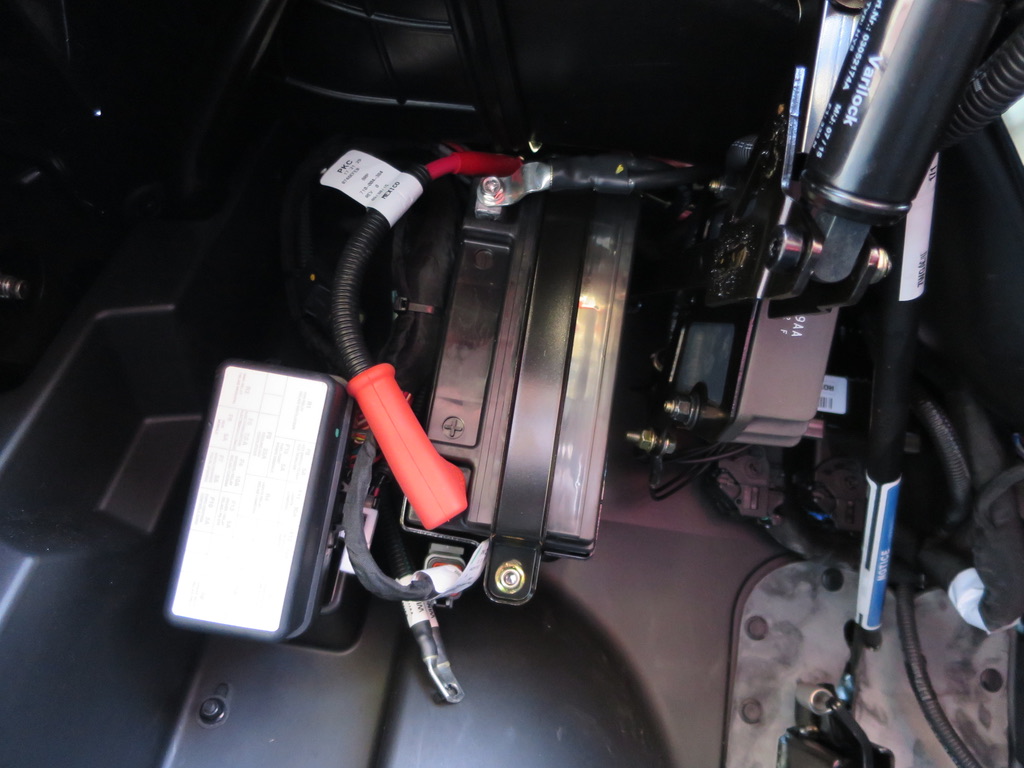Run Without Battery
The battery in your ATV is more important than most people realize, especially with modern machines.
Your machine can run without a battery if it’s carbureted, but if it’s fuel-injected, it will need the battery to run.
If you remove the battery from a fuel-injected ATV, it will shut off as the battery is needed to run the electronics to keep the engine going. But do it with a carbureted engine, and they most often stay running.
Determine If You Have A Carbureted Or Fuel-Injected ATV
Fuel-injected ATVs are becoming the norm for most high cc engines, anything over 300cc.
But carbureted engines still exist and will probably still be around for a long time.
You can tell if you have a carbureted engine if you have to choke the engine to start it. If there is a lever you need to pull before starting the engine when it’s cold, then you have a carbureted ATV.
If instead, all you do is put the key on and start the engine, then you most likely have a fuel-injected ATV.
Another sign of a carbureted engine is that a lot of them have pull-starts. You rarely see pull-starts on fuel-injected engines and especially today with modern bigger models.
Your EFI ATV Needs A Battery To Run
ATVs that are fuel-injected need a battery always connected to keep the engine running.
A fuel-injected engine uses a computer and fuel injectors that run off electricity to keep the engine running as it should.
The battery acts as a pool of power these electronics can pull from but remove this pool, and it has nothing to keep the engine running. The electronics are sensitive, and the constant and predictable power from a battery is needed.
The ATV uses the battery, stator, regulator, and rectifier to give the computer (ECM) a good and steady supply of power that it needs to keep your engine running. If anyone of these starts acting funny or goes bad, it can cause all kinds of issues. Of these things to go bad the most it’s the battery, so make sure to keep a good battery in your ATV.
Why Can Carbureted Engines Run Without A Battery
The carbureted engines can run without a battery because the battery is only needed in the starting process.
Once the ATV engine is going, the stator or magneto supplies all the needed power to keep the engine going.
The carburetor uses no electrical power and is all mechanical, and the only thing that needs power to keep the engine going is the spark plugs.
This is why it’s common to see pull-starts on carbureted engines, as the battery is not needed.
Dead Battery
A carbureted ATV engine will run without a battery which also means it will run on a dead battery.
But when it comes to a fuel-injected engine, it’s not as cut and dry.
It’s possible to run a fuel-injected quad on a dead battery, but it won’t run well. Anything that has a power draw, like lights and the winch, could kill the engine if they take too much power from the battery.
Depending on how dead the battery is, it could supply just enough pool of power to keep the engine running; the pool may be shallow, but it’s just enough.
If your fuel-injected ATV has a dead battery, you need to replace it with the correct battery. Many starting and running issues can be traced back to a bad battery, so it’s best to replace it every 3 to 5 years.
Why The Stator Can’t Keep Up
The stator is the thing that charges the battery for your ATV. A stator works very similarly to an alternator, but they’re not the same.
Think of a stator as a simplified alternator.
A stator is typically used in smaller engines, such as those in ATVs, while an alternator is found in larger engines, like those in cars. An alternator is more efficient at generating power than a stator, but a stator is better suited for smaller engines. This is why removing a car battery won’t stop the engine immediately, though it will not run optimally.
What makes a stator and an alternator different is the magnets. Both have copper wires that rotate in a magnetic field, but only a stator has a fixed magnetic field due to only having magnets. An alternator does not have magnets and instead generates an electromagnetic field.
Since an alternator can adjust its magnetic field as it needs it, this helps regulate the power output. A stator uses fixed magnets, so it can’t regulate, and thus why ATVs have regulators, so the battery and components get a good constant supply of power.
Since stators are simpler and easier, they’re used in ATVs. They also can be made more compact and be hidden inside the engine block, which is a huge plus for quads as they go in mud and dirt. The downside is that a stator can’t supply as much power back, but it’s enough power for an engine so long as it can dump the power into the battery’s pool.
